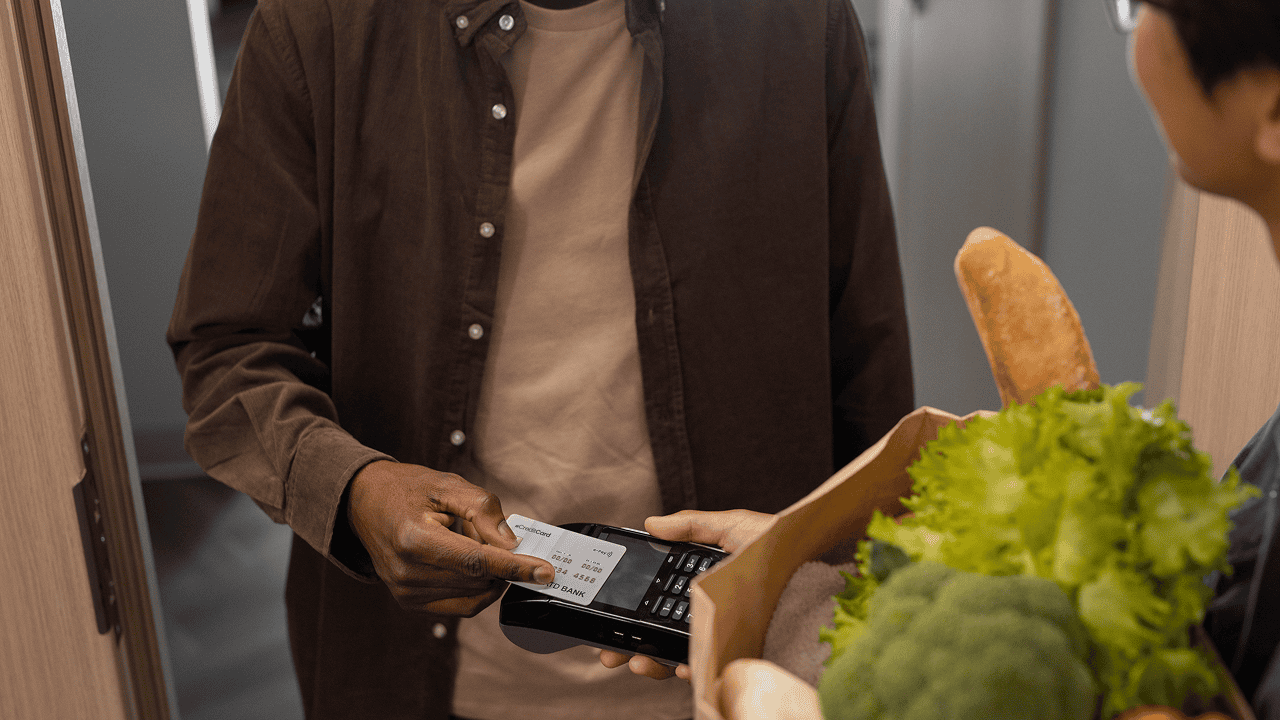
By Emelia Parsons August 11, 2025
The convenience retail industry is rapidly evolving as customer expectations shift toward speed, personalization, and frictionless experiences. As smartphones become the central tool for daily transactions, mobile payments in convenience stores are becoming more common. These digital payment methods are not only reshaping how people pay but also how they interact with loyalty programs and in-store technology.
Convenience store operators are recognizing that embracing digital innovation is no longer optional. From self-service kiosk payments to personalized rewards through apps, retailers are deploying tools that meet the demands of modern consumers. Payment systems that were once simple cash or card terminals are now fully integrated solutions connected to data, customer insights, and engagement strategies.
The Rise of Mobile Payments in the Convenience Store
Over the past few years, mobile payments in convenience stores have grown from a niche trend to a mainstream expectation. As customers rely more on smartphones for everything from banking to ordering food, it’s only natural that they also use them to pay at the pump or at the register.
Mobile wallets allow users to store their credit or debit card information on their phones securely. Transactions are authenticated through facial recognition, fingerprint scans, or passcodes, offering convenience without sacrificing safety. For convenience store operators, this means faster checkout times and fewer issues with physical cards or cash handling.
The convenience factor is especially important for gas stations and urban C-stores where time and ease are top priorities. Whether through Apple Pay, Google Pay, or other wallet services, digital payments reduce the friction typically associated with traditional point-of-sale systems.
Consumer Expectations and Payment Speed
One of the main reasons customers adopt contactless payment methods is the speed of service. Long queues at the cashier can deter repeat visits, especially in locations where time is limited, such as gas stations or highway convenience stops.
A contactless-enabled payment terminal can complete a transaction in seconds. Combined with other technologies such as self-checkout or app-based ordering, this creates a seamless, customer-friendly environment. Customers expect the option to pay quickly and securely, without unnecessary steps or delays.
As retailers respond to these expectations, the ability to offer fast, reliable mobile payments becomes not just a competitive advantage, but a necessity. Those without such options may risk losing customers to more tech-savvy competitors.
Contactless Payment Adoption Post-Pandemic
The COVID-19 pandemic accelerated the shift to contactless payment technologies. Shoppers became more cautious about touching shared surfaces like card machines and cash. This led to a surge in the use of tap-to-pay credit cards and mobile wallets.
Convenience stores that adopted contactless early were able to maintain customer traffic while others struggled with outdated systems. Even after pandemic restrictions eased, many consumers continued to prefer contactless methods for hygiene and ease of use.
The continued growth in mobile wallet users suggests this shift is not temporary. Retailers that invested in contactless infrastructure are now reaping the long-term benefits of higher customer satisfaction, increased throughput, and a perception of being modern and customer-focused.
Mobile App Payments at Gas Stations
The fuel industry has seen a major transformation with mobile app payments at gas stations. Major fuel brands and independent retailers alike are introducing mobile apps that allow users to pay directly from their car before even touching the pump.
These apps often offer added benefits such as digital receipts, fuel discounts, or integration with loyalty programs. Drivers no longer need to walk into the store or use outdoor card terminals, which not only saves time but also reduces exposure to weather, crowds, and card skimming risks.
From the retailer’s side, mobile app payments reduce transaction time and improve customer flow, especially during peak hours. The added layer of app-based marketing also allows operators to push promotions, collect data, and personalize customer offers based on visit frequency or purchase habits.
Self-Service Kiosk Payments and Convenience
Another major trend is the expansion of self-service kiosk payments in the convenience store space. These kiosks allow customers to scan, pay, and go without cashier interaction. Especially in urban and high-traffic locations, kiosks improve store efficiency and reduce labor dependency.
Kiosks are often equipped with multiple payment methods, including credit cards, mobile wallets, and QR code scanners for app payments. This flexibility enhances the customer experience and helps serve more people in less time.
Moreover, kiosks can be configured to upsell items, promote loyalty offers, and guide customers through bundled deals. Their integration into the store’s digital ecosystem makes them a powerful tool for operational efficiency and customer engagement.
Loyalty Programs in the Digital Age

One of the most effective ways to keep customers returning is by offering a robust c-store loyalty program. Traditionally, these programs relied on punch cards or plastic membership cards. Today, loyalty is managed through apps and digital wallets, allowing for real-time tracking and reward redemption.
Customers who use mobile payments often expect instant feedback, such as points added or rewards earned. A well-integrated loyalty program can be linked directly to the customer’s phone number or app account, eliminating the need to carry separate cards.
For convenience store operators, these programs offer access to detailed purchase histories and shopping patterns. This data can be used to personalize offers, send targeted promotions, or even alert customers about special discounts based on their buying habits.
How Digital Wallet Rewards Drive Engagement
Digital wallet rewards combine the convenience of mobile payments with the appeal of earning something back. These rewards may include cash-back offers, digital coupons, or free product incentives delivered directly within the payment app.
For consumers, this means added value for everyday purchases. For retailers, it creates a loop of engagement that encourages repeat visits and increased basket size.
These digital reward systems are especially powerful when integrated with mobile payments in convenience stores, allowing seamless accumulation and redemption. When customers can pay, earn, and save in one action, the experience becomes more enjoyable and habit-forming.
The Role of Data in Modern Convenience Retail
One of the lesser-discussed benefits of mobile and app-based payments is the amount of data they generate. Every transaction offers insights into what customers buy, when they visit, and how they respond to promotions.
Retailers can use this data to refine their inventory, adjust store layouts, and plan more effective marketing campaigns. For example, if many customers use mobile app payments at gas stations and follow up with coffee purchases, the store might bundle fuel rewards with beverage discounts.
Data also plays a vital role in tracking loyalty program success. By analyzing which offers are redeemed and which customer segments are most active, businesses can fine-tune their approach for better results.
Future Trends in Mobile Payments and Loyalty
Looking ahead, convenience stores will likely see even more innovation in mobile and digital payment systems. Biometric authentication, voice-activated kiosks, and AI-driven personalized offers are becoming more viable as technology matures.
Loyalty programs will become smarter and more integrated with other digital tools. Partnerships between retailers and payment providers may allow customers to earn and spend rewards across multiple businesses.
In this environment, mobile payments in convenience stores will move beyond simple transactions. They will become a bridge between the store and the customer’s broader digital lifestyle, offering meaningful engagement, convenience, and rewards in real time.
Challenges and Considerations for Implementation
Despite the advantages, there are challenges to implementing mobile and contactless systems. Smaller stores may struggle with the cost of upgrading terminals, training staff, or integrating multiple systems.
Security is another concern. With increased digitization comes the need for strong data protection and compliance with payment standards. Retailers must ensure their systems are regularly updated and comply with industry best practices.
Still, the cost of inaction may be higher. As customers demand more flexible and rewarding experiences, stores that fail to modernize risk falling behind. Investing in contactless payment and loyalty integration is increasingly viewed as essential rather than optional.
Creating a Unified Experience Across Channels
Modern convenience stores are no longer just about physical products. They are becoming digital ecosystems. From the fuel pump to the snack aisle to the app on your phone, every touchpoint should feel consistent and connected.
By combining self-service kiosk payments, app-based loyalty, and mobile app payments at gas stations, retailers can create a smooth, unified experience that builds customer trust and satisfaction.
This omnichannel approach ensures that regardless of how or where a customer chooses to interact, the brand delivers a familiar and efficient experience every time.
Conclusion: Embracing the Digital Shift in Convenience Retail
The shift toward mobile payments in convenience stores is reshaping the retail experience. What was once a simple stop for fuel or snacks is now part of a larger digital journey. With the integration of c-store loyalty programs, contactless payment options, and data-driven digital wallet rewards, retailers can create a customer experience that is faster, smarter, and more engaging.
To stay competitive, convenience store owners and operators must embrace the tools and strategies that define modern retail. Whether through self-service kiosk payments or innovative mobile app payments at gas stations, the future of convenience lies in digital readiness, personalization, and speed.